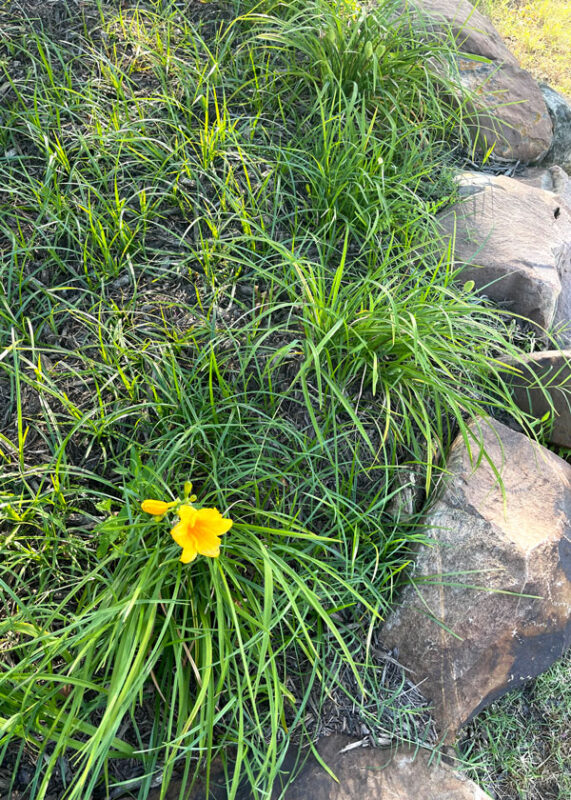Q&A – Ask Neil: June 26, 2025
(Please read these instructions carefully.)
Before you post your question, please look at recent issues to see if someone else has already asked it. You might find your answer there.
How to submit your question…
(Note: You may need to allow a pop-up window to come up in order to get the link for sending your photo(s). If you have already submitted your question and didn’t see the pop-up window, please click here.)
• Click the link provided below to post your question. After you submit your question, a new window will pop up giving you the address to which you can e-mail a SHARP, HIGH-RESOLUTION PHOTO to accompany your question. Please DO NOT SEND THUMBNAIL PHOTOS in case I need to zoom in to see things.
• Click here to post your question.
• Please ONLY POST YOUR QUESTION ONE TIME. We can only accept a set number of questions each week, and when we get duplicates it costs other people their chances.
• One question per reader, please.
• Please use this only for posting questions – not for standard emails.
• Watch for your answer in the following week’s e-gardens.
• I choose those of greatest general interest. For example, plant IDs seldom make the cut.
• I must have your first name or initials.
• I must have your city or county. (Texas is a very large state.)
Important favor: I’ve been covered up this spring with questions about live oaks losing chunks of bark. Rather than continuing to answer the same questions weekly, I’d ask that you look back to previous issues. You’ll find several replies that I’ve posted. Thanks!
QUESTION 1
HOW CAN I PROPAGATE THIS CRAPE MYRTLE?
Question: This dear crape myrtle in Austin (photos from last fall) has been part of our family for more than 50 years. It has great sentimental value. I have no idea of its variety, but I’d like to propagate it for a location in Abilene. How can I best do this? Laura B., Abilene.
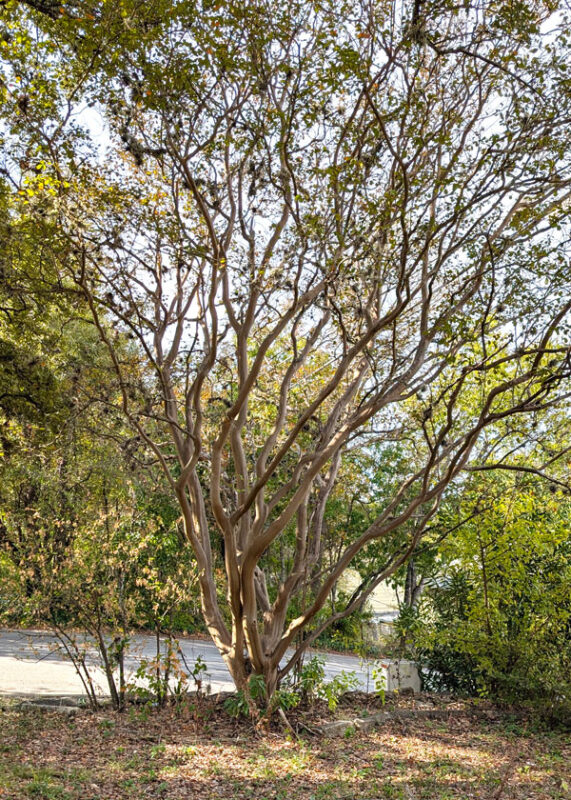
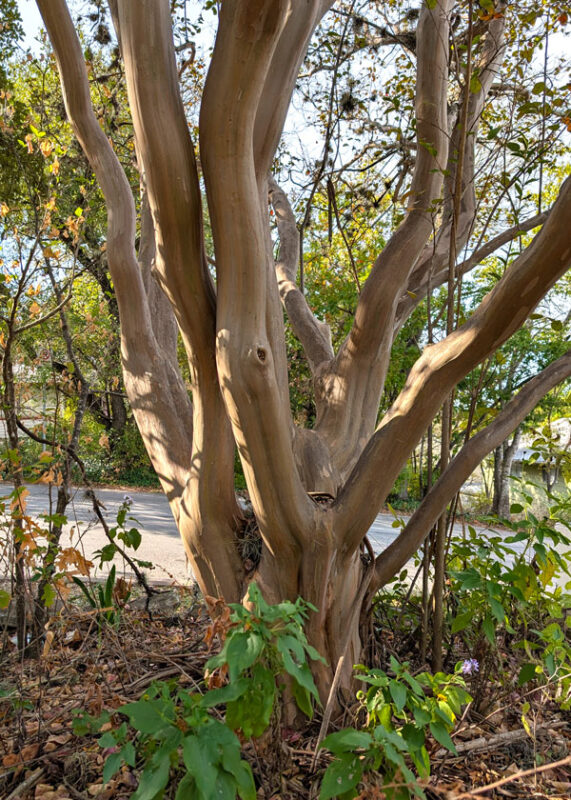
Answer: That can be done. I would suggest propagating several extras just to make sure you have a few that succeed.
There’s no point in writing a detailed answer twice. Here is a link to the instructions I wrote for the website of The Crape Myrtle Trails of McKinney. It gives you a couple of options.
I notice, on your closer photo, that there are some sprouts near the trunk of the tree. If those are crape myrtle sprouts and not some random seedling tree, then they might be the best source for cutting wood next winter. There might even be a couple of small sprouts that could be cut loose from the mother tree and transplanted intact. That’s not too likely, but it’s worth looking.
QUESTION 2
WHAT HAS CAUSED THE YELLOWED LEAVES/LEAF MARGINS?
Question: I have many plants with yellowed leaves and leaf margins. I’m not sure how to help them. Possumhaw holly, tulip magnolia, Texas mountain laurel, phlox, oakleaf hydrangea. Jan H., The Colony, Denton County.
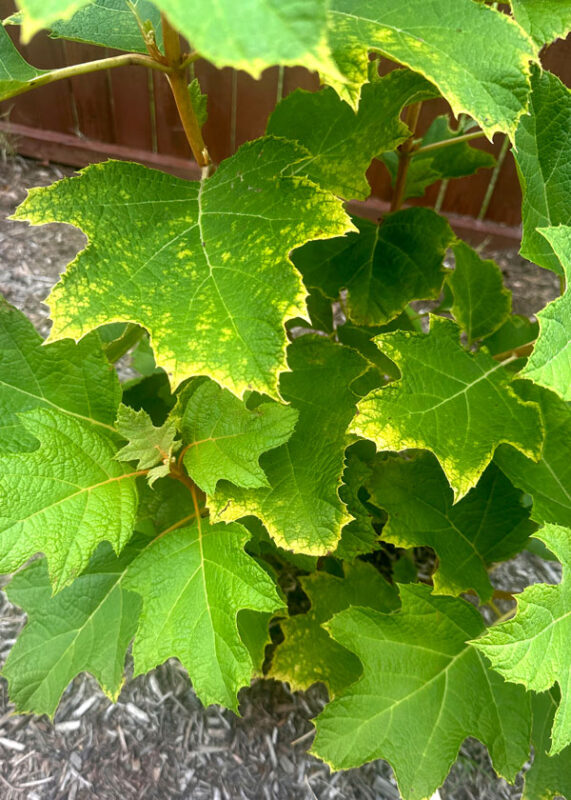
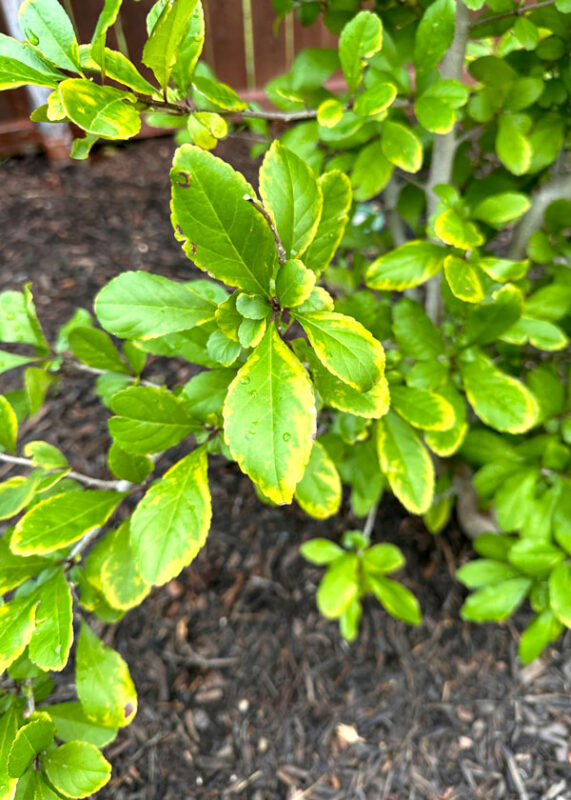
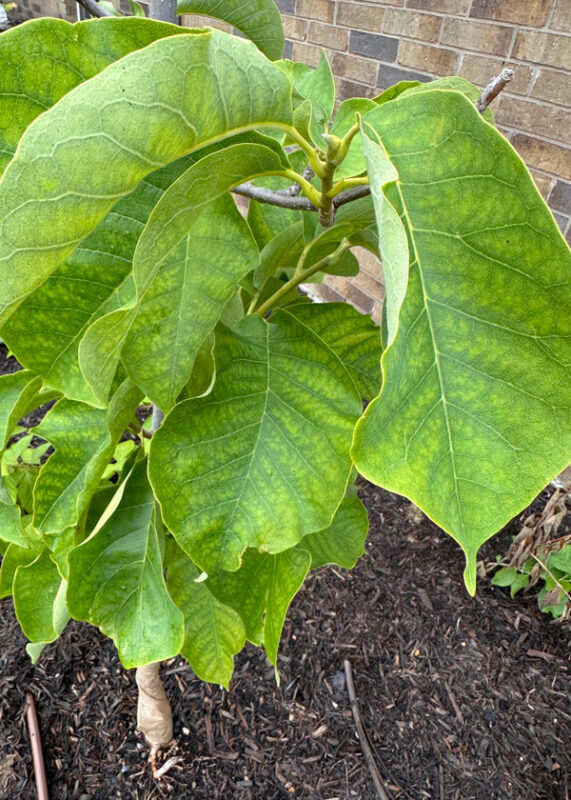
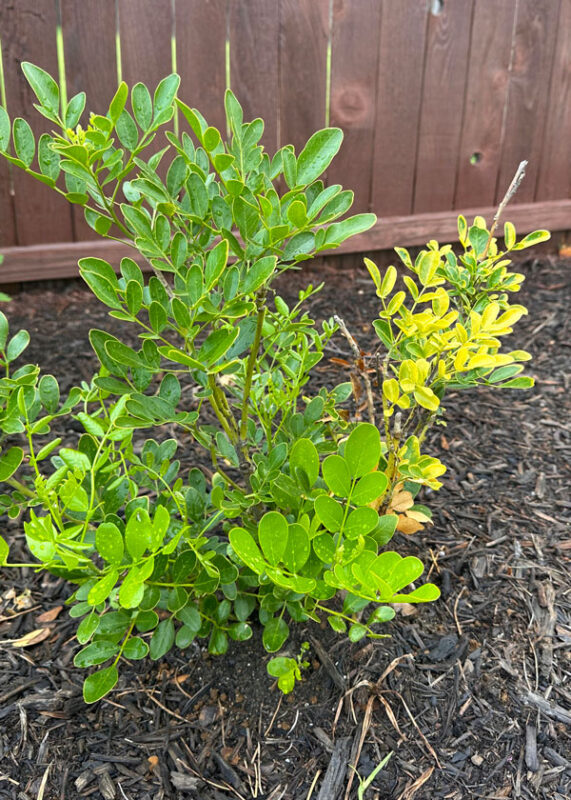
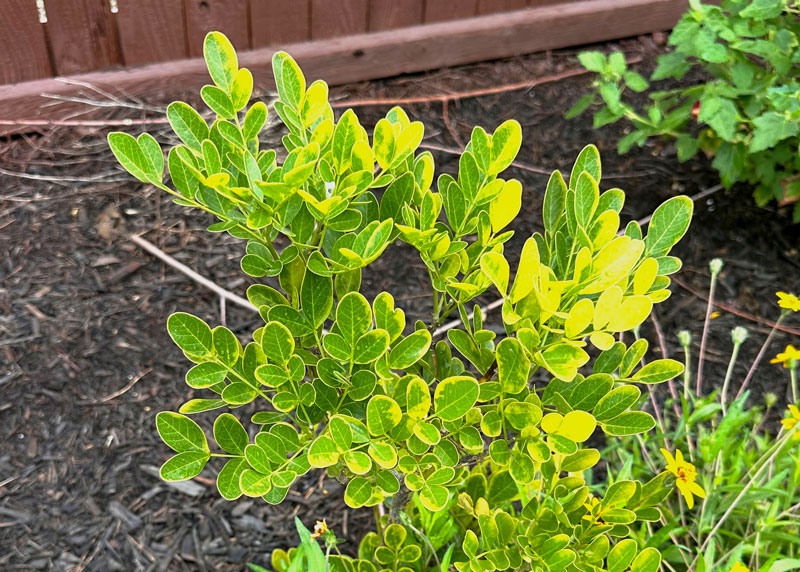
Answer: Let’s start with the big picture, then shrink things down. Those plants are completely unrelated one to the next. Therefore, this is not a disease. Diseases are more specific in the plants they attack.
I thought your possumhaw holly looked like it might have gotten some kind of glancing blow from a weed-and-feed product that might have washed into the bed. But after I looked at the other photos, I decided that wasn’t likely.
I live 20 miles from you. I know the soils of The Colony are highly alkaline, so that would impact the availability of nutrients for uptake by your plants’ roots. Hopefully you included several types of organic matter as you worked up the beds. However, I see primarily bark mulch, and if that was tilled into the soil it could be tying up nitrogen and other nutrients.
Notice, please, that on several of your photos the newest leaves (smallest) are solid green. That suggests that those plants may be outgrowing the problem.
I would apply a diluted solution of a high-nitrogen, water-soluble fertilizer to the bed with a water wand and water breaker. Take photos of the bed just before you start, then come back to the same bed and take another photo one or two weeks later to see if the leaves green up. If that helps, repeat it every couple of weeks the balance of this year. The bark may be robbing the plants of their much-needed nitrogen.
QUESTION 3
HOW DO TREES IN SHOPPING CENTER LOTS GET ENOUGH WATER?
Question: I have always wondered how trees planted in shopping centers get enough water when they’re surrounded by concrete? David G., Kaufman.
Answer: Good question. One I don’t believe I’ve ever been asked before.
You would be amazed. Back in the early 70s a friend of mine was in charge of plantings at North Park Center in Dallas. He showed me the 4-in. PVC pipes his crews had installed vertically alongside their trees so that they could pump water out from beneath the concrete. It would be dozens of gallons once or twice a week. Water gets under the parking lot, but then it can’t get back out. The concrete makes the ultimate mulch. You’ll see that many commercial lots are planted with bald cypresses – otherwise known as “swamp cypresses” because of their ability to survive in ultra-boggy conditions.
QUESTION 4
WHAT HAS CAUSED THE BLACK AREAS OF MY DWARF YAUPON HOLLIES?
Question: My dwarf yaupon hollies are 2 years old. They have looked great until these black sections showed up less than one month ago. I’ve looked closely and I can’t see anything. I see no evidence of insects or disease. Any ideas? Buddy W., Georgetown.
Answer: I know of no insect or disease that would do this to dwarf yaupon. This looks totally like something has been sprayed across the affected parts of the plants. It could have been hot water out of a garden hose left out in the sun, but it also could have been a tall male dog. (Sorry for the insensitive nature of that reply, but I’ve seen it many times. When the spots are random and all across a backyard lawn, that’s usually due to a female dog.)
I assume you have not let these get “momentarily” too dry for a day or so? That can also cause portions of any holly to die out. Hollies don’t give you the luxury of actually wilting like most other plants do. If they did, you would see the imminent damage about to happen.
QUESTION 5
WHY IS MY CRAPE MYRTLE LOOKING STRANGE?
Question: We have a sad looking crape myrtle. It came up like a weed in our yard. It’s looking very sparse this year with top branches that appear to be dead. The trunk looks moldy. Gail H., Iola.

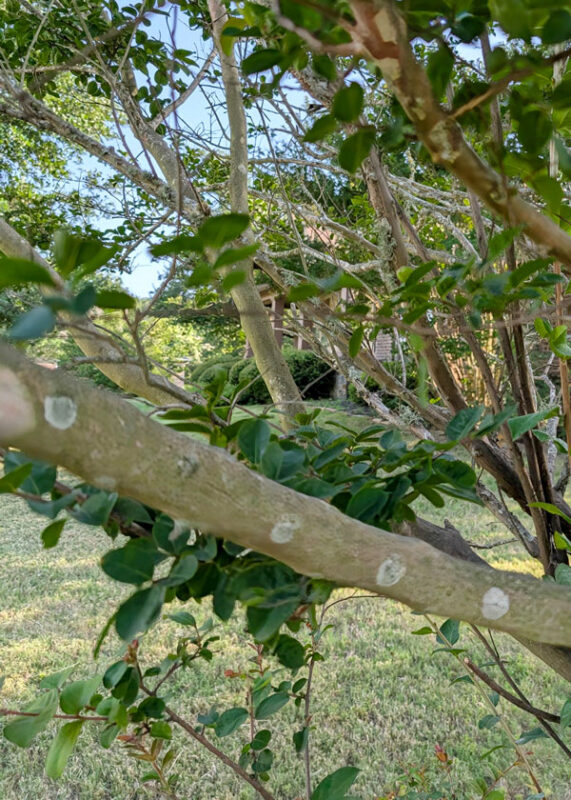
Answer: Your plant looks like it probably suffered freeze damage in one of the recent winters. Your starting point would be to trim all the dead wood out, even now. It’s not going to green up and start growing, so you might as well get that dead growth out of the way.
Second, reshape the plant as needed. Leave no stubs on any of the branches. All cuts should be flush with another surviving branch or limb.
If it looks like there will be limited or no new growth on the old trunks, you could always cut the plant back to the ground. The new shoots coming up around the old trunks would be capable of developing into new trunks quickly. Or, if you opt to leave the old trunks in place, cut away all the unwanted new shoots.
As for the “mold,” what you’re seeing is actually lichens. They are symbiotic growths of algae with funguses. You’ll see them on boulders as well. They cause no harm to the tree and they are no cause for concern.
QUESTION 6
WHICH TREES WILL BE BLOOMING NEXT MONTH?
Question: Which of these trees will be blooming next month? I have many of each for my honeybees. Vitex, Texas sage, crape myrtles, golden raintree, desert willows, golden leadball, almond verbena. Vitex is my favorite. James B., Pilot Point.
Answer: By “next month,” I assume you mean on into July. Several of the plants you mentioned bloom only one time per year. Vitex is certainly among those as far north as you are. Folks in South Texas trim their vitex plants heavily after the spring blooms to promote regrowh and a late summer/fall second cycle of flowering. Of the others, those that will bloom repeatedly or continuously include Texas sage (following rains), crape myrtles, and desert willows. Don’t overlook the various salvias and lantanas. They keep blooming all season long. I’d suggest long beds of each. And one of the improved trumpetcreepers on a fence. Talk to members of your county’s beekeepers’ association. They’ll have additional suggestions.
QUESTION 7
WHAT CAN I DO WITH A BED THAT IS THIS FULL OF NUTSEDGE?
Question: I’m fighting a grassy weed (nutsedge?) in my flowerbeds and garden area. I’ve tried multiple rounds of a labeled nutsedge control. I’ve tried pulling it twice a day. The bed is totally overgrown after one week of not pulling. What can I do? Brian S., McKinney.
Answer: My heart goes to you. You’re right on the ID. You can always confirm nutsedge by rolling a plant between your thumb and index finger. True grasses have round stems. Sedges have triangular stems.
Pulling nutsedge is a complete waste of time and effort.
Unfortunately, grasskiller sprays won’t do any good on sedges. That’s when we switch over to products like the original Image (developed specifically to control nutsedge without harming turfgrass) or a more commercial brand known as Sedgehammer.
If you haven’t tried those, I would do so. They are different, so if one didn’t work, try the other. I’ve had good luck with Image, but it is not fast. The nutsedge populations dropped over a period of several weeks and a second treatment was recommended 30 days after the first.
If the products have not worked for you, it may be easier (I shudder to give in and write this) to bring in a small front-end loader and remove the top foot of soil and replace it with topsoil that is guaranteed to be weed free. There are times when that’s the most expedient way out.



